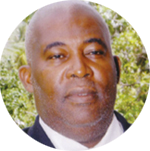
WELCOME students to another week in the Open School for the Second term of the academic or school year 2022 to 2023. The school is open to parents, guardians, teachers, students and members of the public. It is my hope that students will acquire knowledge and skills which will enable them to improve student achievement in Mathematics.
Today’s lesson is the third in the series on “Improving student achievement in Mathematics.” At the end of the lesson, students will be able to (1) Name at least one classroom practice that teachers could adopt, to allow students to work together. (2) What is cooperative learning?
In reviewing the second lesson, we should have understood that teachers and facilitators of learning must focus on meaning and provide the opportunity for students to get meaning in the teaching of Mathematics.
Another focus of the lesson was that students can learn new concepts and skills while solving problems.
And another principle is that teachers and facilitators of learning, must give the students the opportunity to practice and invent, and there must also be a balance which would give them the opportunity to interact in other subject areas.
In today’s lesson, we begin by indicating that teachers and facilitators of learning must be open to student solution methods and interaction. Very importantly teachers must be aware of how students construct knowledge.
Children build on their prior experiences to gain new understanding of themselves and the world. They construct knowledge through their daily experiences, at home, at school and in their community by observing, exploring, reflecting, interacting, making decisions and communicating with family members, peers and teachers about what they are experiencing.
The teacher may give them a method of working a concept. For example: Add 102+28 +50. The student in working the computation may decide to use another method: 100 + 30+ 50 and get the answer in very quick time, 150.
Now the students who do that are constructing their own knowledge. They would have understood the method of re-grouping which they were taught previously and so they were able to regroup the computation in a way which is a lot easier for them. They regrouped the numbers in 10s.
Now there is nothing wrong with that method. And the teachers should really pat the student or students on the back when they use their method to arrive at their solution.
Another research find indicate, that teachers and facilitators of learning, should structure instruction around carefully chosen problems, allowing to interact when solving problems.
Most of our Mathematics texts which are published in the Caribbean, have a wide range of problem exercises. However, the classroom teacher should not allow the students to do random problem exercises. It means therefore, that classroom teachers should review the problems exercises beforehand, and select those that are ideal or appropriate for, and which relate to, the concept being taught.
Another research finding suggests that teachers should concentrate on providing opportunities for students to interact in problem-rich situations.
Many years ago when I attended Primary School and you were given seat work to do, you were not allowed to speak to the student to your right or left, or front and back; or even to peep at his book. That would have been considered copying.
We come now to the principle of small-group learning. Our education system came from a rigid system of individual students completing their given exercise, to a system where students are allowed to work in small groups.
Research findings have shown consistently, that using small groups of students to work on activities, problems and assignments can increase student achievement in Mathematics.
Now what exactly is small-group learning? Small group learning is a method that can supplement case discussion and allow students to interact with each other. Students work together in groups of typically 3-6 members, helping each other think critically, master course concepts, and apply them in real-world situations.
As a classroom teacher, I have seen scores of students that are motivated towards a common goal and work together to support each other’s learning. Large volumes of excellent work has emerged from students working in groups. Much later, theorists and educationists called it Cooperative Learning.
Now cooperative learning is an instructional strategy that enables small groups of students to work together on a common assignment. The students share ideas, documents, methods; and with this world of technology, videos to enhance the learning process and to arrive at favourable solutions.
As a Principal, I often encouraged teachers to utilize the small group practice or cooperative Learning.
Small- group learning tends to be more informal and brief, and can happen several times during the school day.
Classroom teachers and facilitators of learning should be clear from the beginning that instructions to the students must be clear to allow group work to proceed vigorously.
Now two questions for you: (1) Name at least one classroom practice that teachers could adopt, to allow students to work together? (2) What is cooperative learning?













